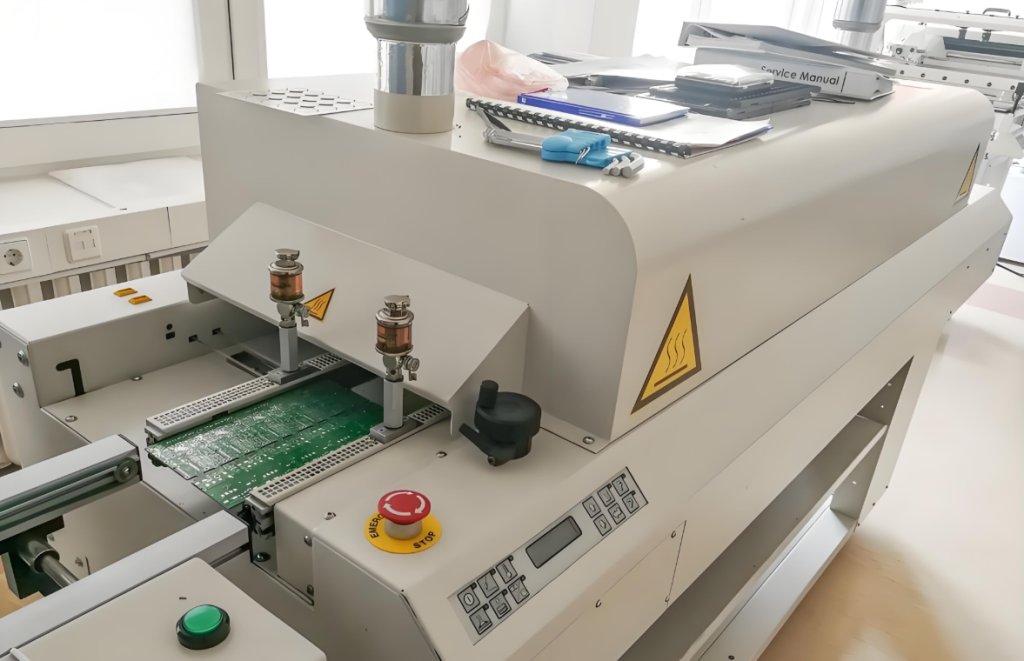In the world of electronics manufacturing, the PCB soldering process is critical, different soldering methods have their unique features, today to compare the hand soldering, dip soldering, wave soldering, and reflow soldering of these four common processes.

Manual Soldering
Principle: The soldering iron is used to heat and melt the solder wire. Connect the component pins with the PCB pad.
Equipment and materials: soldering iron (power 20 – 100W), solder wire (tin content of 60% – 63% tin-lead alloy), flux (rosin, solder paste).
Operation Procedure: Preheat the soldering iron to the appropriate temperature, and dip the flux. Contact the soldering point to make the pad and pin heat, send the solder wire melting and moistening, first remove the solder wire, and then remove the iron.
Advantages: flexible operation, suitable for small quantities, complex precision welding, and maintenance; equipment is simple and low cost.
Disadvantages: low efficiency, quality depends on manual skills. Poor consistency, and high labor costs.
Dip soldering
Principle: Dip the PCB with inserted components into the melted solder tank, and the solder will moisten the solder joints.
Equipment components: solder tank, fixture, flux spraying, preheating, transmission device. The solder is a tin-lead alloy (melting point 183 – 215℃).
Operating procedure: PCB fixing, flux spraying, preheating (80 – 120°C, 1 – 3 minutes). Dip into solder bath at 1 – 3 m/min for 3 – 5 seconds, cool down.
Advantages: higher efficiency than manual welding, suitable for medium batches of more regular PCB welding, moderate cost.
Disadvantages: easy-to-brid short-circuit, complex PCB welding quality is poor. There is a risk of welding leakage.
Wave soldering
Principle: PCB to a certain angle speed through the melted solder wave. Under the gravity and impact force to form a solder joint.
Key components and parameters: solder wave generator (single wave, double peak, etc.), solder temperature 230 – 260 ° C. PCB transfer speed 0.8 – 1.5 m / min.
Operation process: preheating (100 – 150°C), flux spraying, cooling after wave soldering.
Advantages: high efficiency and stability, suitable for large-scale plug-in PCB production, reliable quality.
Disadvantages: expensive equipment, high space, and maintenance requirements. Stringent PCB design generates dross.
Reflow soldering
Principle: through the heating of the solder paste, to complete solvent evaporation, solder melting, and other processes to achieve welding.
Equipment and material characteristics: multiple temperature zones (preheating, holding, reflow, cooling). Solder paste contains solder alloy powder (tin, silver, copper, etc.) and flux.
Operation flow: Printing solder paste, mounting components, entering the reflow soldering machine. Through the temperature zones (preheating to about 150 ℃, holding 150 – 180 ℃, reflow to above the melting point of the solder, cooling).
Advantages: High precision, high reliability, high degree of automation. Suitable for tiny dense SMC/SMD soldering.
Disadvantages: high requirements for solder paste printing and placement accuracy. Complicated temperature zone setting, exhaust gas needs environmental protection treatment.
Each of the four welding processes has its advantages and disadvantages. Enterprises in the choice, need to consider the product type, production volume, quality requirements, cost budget, and environmental factors. Only choose the right process, to ensure the quality of PCB welding. Improve production efficiency, reduce costs, enhance market competitiveness, and promote the electronic manufacturing industry to move forward.
